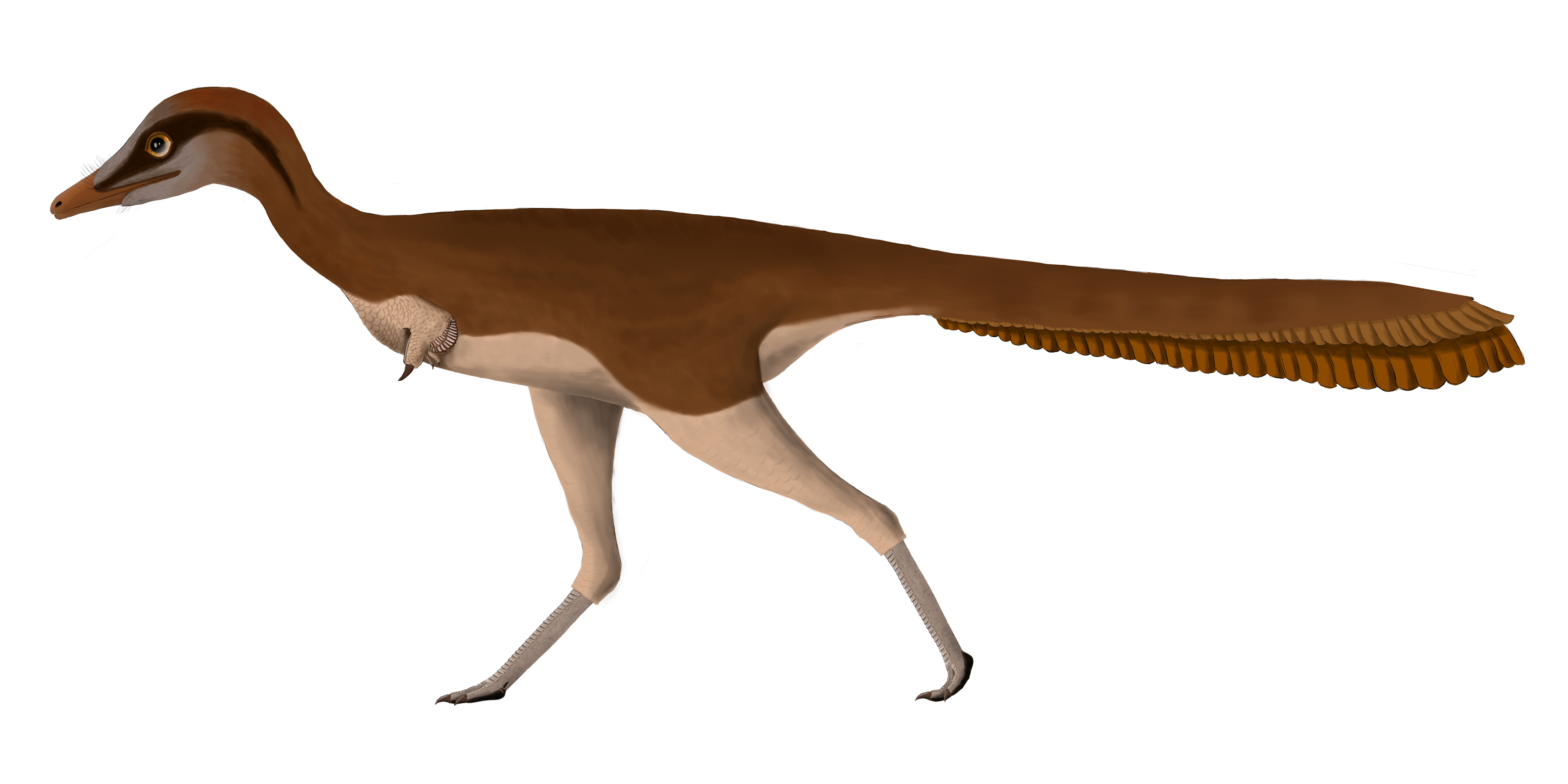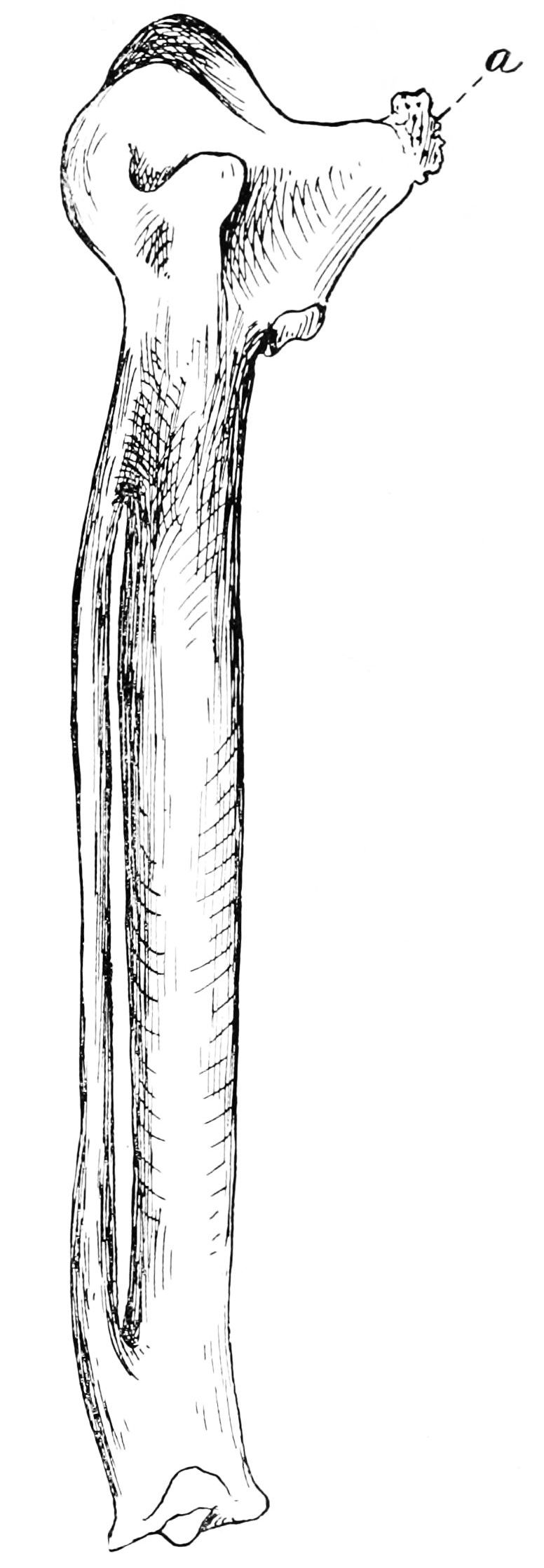|
Ondogurvel Restoration
''Ondogurvel'' () (meaning "egg lizard") is a genus of alvarezsaurid dinosaur from the Late Cretaceous (Campanian) Barun Goyot Formation in southern Mongolia. The type and only species is ''O. alifanovi'', known from a partial skeleton consisting of fragments of two last dorsal vertebrae, three anterior sacral vertebrae, right ilium, left and right pubis and ischium, articulated right tibia, fibula, metatarsals II and IV, and phalanges IV-1 and IV-2, right carpometacarpus, left and right manual phalanx II-1, right femur, left pedal phalanx II-1, and fragments of unidentified phalanges. Discovery and naming In 2022, the type species ''Ondogurvel alifanovi'' was named and described by Alexander O. Averianov and Alexey V. Lopatin. The generic name, "''Ondogurvel''" combines the Mongolian words өндөг “ondo” (), meaning egg, and гүрвэл “gurvel” (), meaning lizard. The specific name, "''alifanovi''" () honors the late Russian paleontologist Vladimir Alifanov who fou ... [...More Info...] [...Related Items...] OR: [Wikipedia] [Google] [Baidu] |
Late Cretaceous
The Late Cretaceous (100.5–66 Ma) is the younger of two epochs into which the Cretaceous Period is divided in the geologic time scale. Rock strata from this epoch form the Upper Cretaceous Series. The Cretaceous is named after ''creta'', the Latin word for the white limestone known as chalk. The chalk of northern France and the white cliffs of south-eastern England date from the Cretaceous Period. Climate During the Late Cretaceous, the climate was warmer than present, although throughout the period a cooling trend is evident. The tropics became restricted to equatorial regions and northern latitudes experienced markedly more seasonal climatic conditions. Geography Due to plate tectonics, the Americas were gradually moving westward, causing the Atlantic Ocean to expand. The Western Interior Seaway divided North America into eastern and western halves; Appalachia and Laramidia. India maintained a northward course towards Asia. In the Southern Hemisphere, Australia and Ant ... [...More Info...] [...Related Items...] OR: [Wikipedia] [Google] [Baidu] |
Carpometacarpus
The carpometacarpus is a bone found in the hands of birds. It results from the fusion of the carpal and metacarpal bone, and is essentially a single fused bone between the wrist and the knuckles. It is a smallish bone in most birds, generally flattened and with a large hole in the middle. In flightless birds, however, its shape may be slightly different, or it might be absent entirely. It forms the tip of the wing skeleton in birds. To it, most of the primary remiges attach. The alula, by contrast, is formed by the thumb, which does not completely fuse with the other hand-bones. Likewise, the tipmost primaries attach to the phalanx bones. To non-biologists the carpometacarpus may be best known from buffalo wings. Buffalo wings come in two basic sizes, a large angled one containing three major bones, and a smaller flat one containing only two. The bone missing in the latter is the carpometacarpus. See also * Carpometacarpal joint The carpometacarpal (CMC) joints are five joint ... [...More Info...] [...Related Items...] OR: [Wikipedia] [Google] [Baidu] |
Achillesaurus
''Achillesaurus'' is a genus of alvarezsaurid theropod dinosaur from the Santonian-age Upper Cretaceous Bajo de la Carpa Formation of Rio Negro, Argentina. It was named in reference to Achilles' heel, because diagnostic features are found there for these animals. The genus was a relatively large, basal alvarezsaurid, and a contemporary of ''Alvarezsaurus''. ''Achillesaurus'' is based on MACN-PV-RN 1116, a partial skeleton including a sacral vertebra, four tail vertebrae, part of the left thighbone, shin and foot, and the left ilium. Agustín Martinelli and Ezequiel Vera, who described the specimen, performed a phylogenetic analysis and found their new genus to be an alvarezsaurid with an unresolved relationship to ''Alvarezsaurus'' and more derived alvarezsaurids. Makovicky, Apesteguía & Gianechini (2012) argued that ''Achillesaurus'' might actually be a junior synonym The Botanical and Zoological Codes of nomenclature treat the concept of synonymy differently. * In bo ... [...More Info...] [...Related Items...] OR: [Wikipedia] [Google] [Baidu] |
Alvarezsaurus
''Alvarezsaurus'' (; "Alvarez's lizard") is a genus of alvarezsaurid dinosaur from the Late Cretaceous, living in Argentina approximately 86 - 83 million years ago. It was a small dinosaur, measuring long and weighing approximately . It was found in the Bajo de la Carpa Formation and was named by paleontologist José Bonaparte in 1991 after the historian Don Gregorio Alvarez. The type species is ''A. calvoi''. Description ''Alvarezsaurus'' was a bipedal theropod. Like other lightweight theropods, it had a long tail, and its leg structure suggests that it was a fast runner. The most proximal elements of ''Alvarezsaurus'' caudal vertebrae exhibited ventrally sharp centra and the transerve processes of these vertebrae were sub-triangular and laterodistally directed, features seen in other alvarezsaurids like ''Shuvuuia''. Spinal processes were entirely absent or poorly developed, and each caudal vertebra supported short prezygapophyses. The scapula was visibly curved and proporti ... [...More Info...] [...Related Items...] OR: [Wikipedia] [Google] [Baidu] |
Dzharaonyx
''Dzharaonyx'' (meaning "Dzharakuduk claw", named after the type locality) is a genus of alvarezsaurid theropod dinosaur from the Late Cretaceous Bissekty Formation of Uzbekistan. The type species is ''Dzharaonyx eski''; ''eski'' being an Uzbek word for "old". Description ''Dzharaonyx'' is known from a series of disassociated but well-preserved postcranial material. The form of the humerus is intermediate between that of ''Patagonykus'' and ''Mononykus''. Classification Phylogenetic analysis places ''Dzharaonyx'' in a polytomy including other Asian members of Parvicursorinae. This makes it the oldest parvicursorine known to date. Paleoenvironment ''Dzharaonyx'' lived in the Bissekty Formation, which has been intensively studied in recent years. It represents a brackish environment. It coexisted with larger theropods including the dromaeosaurid ''Itemirus'', the tyrannosauroid ''Timurlengia'', and the troodontid ''Urbacodon''. The hadrosaur ''Levnesovia'', ankylosaurs, an ... [...More Info...] [...Related Items...] OR: [Wikipedia] [Google] [Baidu] |
Albinykus
''Albinykus'' (meaning " Albin claw", after a term used by Mongolian shamans to describe light phenomena in the Gobi Desert) is a genus of alvarezsaurid dinosaur. Fossils have been found from Late Cretaceous-age (Santonian) Javkhlant Formation in the Gobi Desert of Mongolia. The type species ''A. baatar'' was named by Sterling J. Nesbitt, Julia A. Clarke, Alan H. Turner and Mark A. Norell in 2011. Estimated at under in weight, ''Albinykus'' was one of the smallest alvarezsaurs and among the smallest non avian dinosaurs. The body size of alvarezsaurs decreased throughout their evolutionary history, and ''Albinykus'' represents a particularly derived form. One distinguishing feature of ''Albinykus'' not seen in other alvarezsaurids is the complete fusion of the tarsals to other bones of the leg; the proximal tarsals are fused to the tibia bone of the lower leg and the distal tarsals are fused to the metatarsal bones of the foot. The holotype skeleton of ''Albinykus'', specimen IG ... [...More Info...] [...Related Items...] OR: [Wikipedia] [Google] [Baidu] |
Xixianykus
''Xixianykus'' is a genus of alvarezsaurid theropod dinosaur from the late Cretaceous period of China.Xu, X., Wang, D.Y., Sullivan, C., Hone, D.W.E., Han, F.L., Yan, R.H. and Du, F.M. (2010). "A basal parvicursorine (Theropoda: Alvarezsauridae) from the Upper Cretaceous of China.". ''Zootaxa'', 2413: 1-19. Discovery and naming The fossil, holotype XMDFEC V0011, was found in the Majiacun Formation in Henan Province, China. The fossil consists of a partial skeleton, without the skull. Parts of the hind legs, pelvis and spine has also been recovered. ''Xixianykus'' is among the oldest of the derived alvarezsauroids, the parvicursorines, dated to the Santonian– Coniacian, as opposed to other parvicursorines, which are either Campanian or Maastrichtian.Hone, D. (2010)''Xixianykus zhangi'' - A New AlvarezsaurDave Hone's Archosaur Musings, April 23, 2011. The type species is ''Xixianykus zhangi'' described in 2010 by Xu Xing. The genus name refers to Xixia County and to the Greek w ... [...More Info...] [...Related Items...] OR: [Wikipedia] [Google] [Baidu] |
Subfamily
In biological classification, a subfamily (Latin: ', plural ') is an auxiliary (intermediate) taxonomic rank, next below family but more inclusive than genus. Standard nomenclature rules end subfamily botanical names with "-oideae", and zoological names with "-inae". See also * International Code of Nomenclature for algae, fungi, and plants * International Code of Zoological Nomenclature * Rank (botany) * Rank (zoology) In biological classification, taxonomic rank is the relative level of a group of organisms (a taxon) in an ancestral or hereditary hierarchy. A common system consists of species, genus, family, order, class, phylum, kingdom, domain. While ... Sources {{biology-stub ... [...More Info...] [...Related Items...] OR: [Wikipedia] [Google] [Baidu] |
Junior Synonym
The Botanical and Zoological Codes of nomenclature treat the concept of synonymy differently. * In botanical nomenclature, a synonym is a scientific name that applies to a taxon that (now) goes by a different scientific name. For example, Linnaeus was the first to give a scientific name (under the currently used system of scientific nomenclature) to the Norway spruce, which he called ''Pinus abies''. This name is no longer in use, so it is now a synonym of the current scientific name, ''Picea abies''. * In zoology, moving a species from one genus to another results in a different binomen, but the name is considered an alternative combination rather than a synonym. The concept of synonymy in zoology is reserved for two names at the same rank that refers to a taxon at that rank - for example, the name ''Papilio prorsa'' Linnaeus, 1758 is a junior synonym of ''Papilio levana'' Linnaeus, 1758, being names for different seasonal forms of the species now referred to as ''Araschnia lev ... [...More Info...] [...Related Items...] OR: [Wikipedia] [Google] [Baidu] |
Glossary Of Dinosaur Anatomy
This glossary explains technical terms commonly employed in the description of dinosaur body fossils. Besides dinosaur-specific terms, it covers terms with wider usage, when these are of central importance in the study of dinosaurs or when their discussion in the context of dinosaurs is beneficial. The glossary does not cover ichnological and bone histological terms, nor does it cover measurements. A B C D E F G H I J L M N O P Q R S ... [...More Info...] [...Related Items...] OR: [Wikipedia] [Google] [Baidu] |
Parvicursor
''Parvicursor'' (meaning "small runner") is a genus of tiny maniraptoran dinosaur with long slender legs for fast running. At only about from snout to end of tail, and in weight, it was initially seen as one of the smallest non-avian dinosaurs known from an adult specimen.Which was the smallest dinosaur? Royal Tyrrell Museum. Last accessed 2008-05-23. However, in 2022 its was concluded to represent a juvenile individual. Like other members of the |
Cursorial
A cursorial organism is one that is adapted specifically to run. An animal can be considered cursorial if it has the ability to run fast (e.g. cheetah) or if it can keep a constant speed for a long distance (high endurance). "Cursorial" is often used to categorize a certain locomotor mode, which is helpful for biologists who examine behaviors of different animals and the way they move in their environment. Cursorial adaptations can be identified by morphological characteristics (e.g. loss of lateral digits as in ungulate species), physiological characteristics, maximum speed, and how often running is used in life. There is much debate over how to define a cursorial animal specifically. The most accepted definitions include that a cursorial organism could be considered adapted to long-distance running at high speeds or has the ability to accelerate quickly over short distances. Among vertebrates, animals under 1 kg of mass are rarely considered cursorial, and cursorial behaviors ... [...More Info...] [...Related Items...] OR: [Wikipedia] [Google] [Baidu] |





